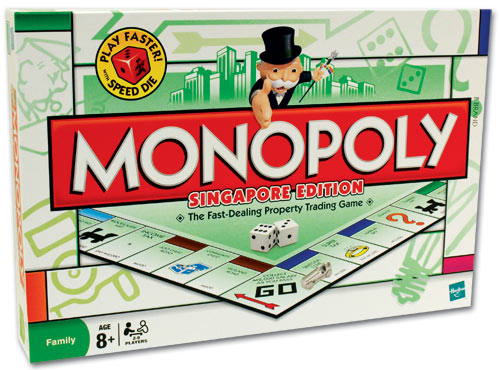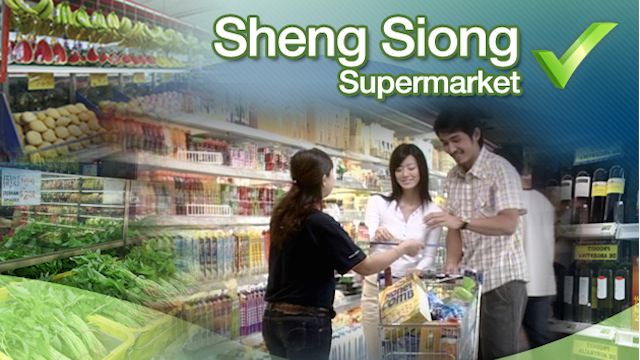Are We Paying Too Much for Our Groceries?
Sheng Siong, one of Singapore’s big three food retailers, announced its fourth quarter and annual results for 2015 a few days ago. The dominant player is NTUC Fairprice, which has sales over four times that of Sheng Siong while the other significant player is Dairy Farm International (DFI), which owns Cold Storage, 7-11. Giant and Guardian Pharmacy. According to a recent DBS report, NTUC has over 50% of the supermarket market. While NTUC is not the dominant player in hypermarkets, where that honour goes to DFI’s Giant, the hypermarket sector is relatively small in land-scarce Singapore. Sheng Siong has nearly 18% while DFI has 12% of the supermarket market.
I was struck by the fact that Sheng Siong was able to increase its gross margin from 24.2% in 2014 to 24.7% in 2015. The gross margin for the last three months of 2015 was 25%. The company ascribed this to higher revenues as well as reduced input costs. NTUC Fairprice had a slightly lower gross margin of around 22% in 2014 though the results for 2015 have not been released yet.
Only DFI which is the smallest player with around 12% of the market reported lower margins in Singapore in the first half of 2015 which it ascribed to competitive pressures, higher rents and the weaker Singapore dollar (the latter really represents higher competitive pressures since the company was unable to pass on cost increases). As DFI does not break out its figures for Singapore separately it is impossible to tell what its gross margin was there but its global gross margin appears to be around 29%.
How does this stack up against other food retailers globally? By comparison most of the supermarket players in the UK have gross margins in the single digits. In the US Walmart has a gross margin of between 22 and 25% but it is by far the dominant player while gross margins for the whole of the industry were around 14% in the third quarter of 2015.
How do pre-tax net margins compare? NTUC enjoyed a net margin of 5.6% in 2014 while Sheng Siong had a pre-tax net margin of 8.9% in 2015. By comparison US grocery retailers had net pre-tax margins of less than 3% in 2015. UK grocery retailers’ pre-tax net margins were negative or close to zero.
Clearly both NTUC Fairprice and Sheng Siong, who together have over two-thirds of the total supermarket market, enjoy considerable monopoly power as shown by their gross and net margins which are comfortably in excess of those enjoyed by retailers in other countries.
When I put up a comment to this effect on Facebook one comment was that it was not a monopoly because there was more than one player. However the concentration in the industry is significantly above the threshold which is used by competition regulators to judge whether a market is not competitive. The US Department of Justice uses the HHI index which is the sum of the squares of the market shares of all the companies operating in the industry. On this measure, Singapore’s HHI score for the supermarket industry is close to 3000. The Department of Justice considers a score above 1800 to be a highly concentrated industry which would raise competition concerns.
Some might object that wet markets are a significant competitor to the supermarkets and function as a restraint on prices. However they are being slowly squeezed out as the Government raises their rents and though I do not have any figures we can assume that their share of the total food retail market is relatively small. In 2009 Sheng Siong was allowed to acquire five wet markets, something that should never have been allowed to happen if we had an effective competition regulator.
A competitive market is one in which players are only able to earn the cost of capital. Returns should be sufficient to spur higher productivity and investment but not more than that. In Singapore we have a situation in which clearly the dominant food retailers are earning monopoly rents. We are paying much more for our groceries and getting less choice than we would if there was a greater degree of competition. Monopoly (or oligopoly) is also stifling innovation as internet grocery shopping has not taken off like it has in other global cities.
Our competition regulator is not fit for purpose and appears to be sleeping on the job. This applies not only in grocery retailing but in a whole host of domestic sectors such as mobile communications and internet, banking, retail, housing, transport, power, medical care and commercial and retail development. I have written about this many times since 2011 (see “Another Round of Monopoly Anyone?”
The reason for this is that there are major conflicts of interest. The state controls the dominant player, which is run by senior PAP Ministers, and also appoints and controls the regulator. Those who should speak up are bought off wth overpaid jobs and this becomes a powerful disincentive to speaking up about cronyism and conflicts of interest.
As an example of how monopoly power works in practice, NTUC was hoarding a cash balance of nearly $450 million at the end of 2014. This is a clear sign of the lack of competitive pressure. Its only major payout was to the Singapore Labour Foundation which is a statutory board run by PAP Ministers and supposed to be for the benefit of the labour movement. This cash hoard seems to be a slush fund to enable PAP Ministers to buy votes by giving away vouchers to the underprivileged during major festivals. A good example is the PM’s distribution to the poor in his constituency over Chinese New Year. The problem with this is that all customers of NTUC Fairprice, including less well-off families, are paying for their own charity through higher prices.
Finally it is puzzling is how Sheng Siong have been able to grow so phenomenally fast from just one outlet in Ang Mo Kio in 1985. They now share a comfortable duopoly with the dominant state player which is content to allow them to continue to expand rather than using their huge market power to drive them out of business. At the same time Cold Storage, which was the major player in the 1960s, has been pushed into third place.
Economic theory might provide some of the explanation for NTUC’s lack of concern at Sheng Siong’s expansion. It predicts that it will be rational for a monopolist to allow another player to take part of its market share rather than engage in a price war which will lead to lower profits for everyone. The two companies can then collude to keep prices high, either directly by agreement, which is illegal, or by price-following behaviour on the part of the smaller player, which amounts to the same thing. I believe strongly that the competition regulator is not doing its job. It has a responsibility to investigate whether NTUC and Sheng Siong are colluding to gouge Singaporean consumers.
However Sheng Siong’s phenomenal growth may have less complicated explanations. While the owners are probably competent managers, they would not be able to do so well in a country like Singapore where the domestic economy is controlled by state owned firms and political power is concentrated in the hands of one family unless they enjoyed official favour. Singapore always does well in indices and true to form it was placed fifth in the Economist crony capitalism index published in 2014 in the company of countries like Malaysia , Ukraine and Russia. Of course a well-placed dynastic alliance (the daughter of the owner of Sheng Siong is rumoured to be married to Lee Hsien Loong’s eldest son by his first wife ) would have nothing to do with Sheng Siong’s success and is purely a coincidence. Or is it?







insightful!!
LikeLiked by 1 person
NTUC Fairprice is a co-operative. Are there not tax advantages for co-ops? If so, its profit margins cannot be compared with their competitors and may even suggest a weaker management.
LikeLike
Yes Curious, thank you for your feedback. So you are saying that it is NTUC’s co-op status that allows them to make bigger profits? That’s a good point but I had already taken it into account. That is why I made sure to compare pre-tax margins of supermarkets globally so as to avoid the effects of different tax regimes.
LikeLike
Are we paying too much for our groceries? The right answer has to be based on a thorough research of the retail pricing of various items of groceries that are commonly bought on a day to day basis by, say, a family from a wet market or supermarket, and then on a comparison of prices with those from another wet market or a competitor supermarket.
Even where prices are closely matched, it would not necessarily mean that consumers are not overcharged. Profit margin may be
construed as an indicator, as to whether the consumer is paying a high price. Where a monopoly does not exist, the consumer can still be taken for a ride if the sellers operate on a tacit understanding that no undercutting should take place between them.
LikeLike